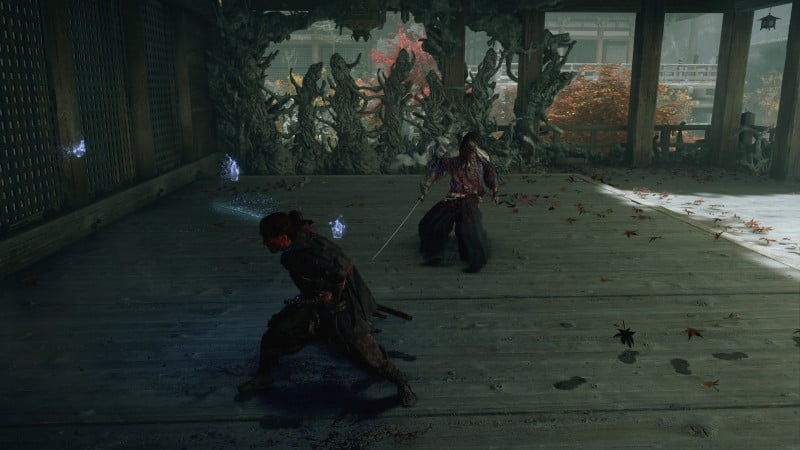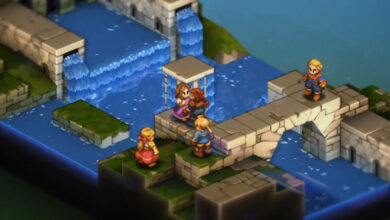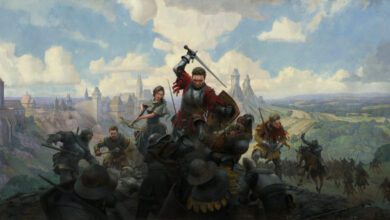Onimusha: Way of the Sword Preview – A Potential Renaissance In The Making

As someone who only admired the Onimusha series from a distance during its heyday, Onimusha: Way of the Sword is an exciting prospect. It’s a modernized entry point for newcomers like myself that takes combat cues from its contemporaries while still feeling distinctly of its era. I traveled to Capcom’s San Francisco office to check out the first playable demo of the game, and though my time was short, I’m feeling good about this demonic romp.
My demo unfolds seemingly early into the adventure. Protagonist Miyamoto Musashi, a fictionalized take on the real historical swordsman (and sporting the likeness of Japanese acting legend Toshiro Mifune), arrives at Kiyomizu-dera Temple in Kyoto to purify it of invading demons, known as Genma. Armed with the powerful Oni gauntlet, an heirloom the brash Musashi doesn’t even want, and his trusty katana, he’s well-equipped for the task.
As I make my way down a mountain trail toward the temple, villagers flee the invading Genma, presenting my first opportunity to sample combat. The feel of Way of the Sword’s light and heavy attacks reminds me of another recent Capcom title, Kunitsu-Gami: Path of the Goddess. It’s not as crisp or fast-paced as some other action games; it’s reminiscent of melee combat from the 2000s (ironically, Onimusha’s prime), and that’s a positive…I think. Most of the enemies I encounter in this section drop fast, however, and the difficulty is extremely manageable.
Musashi and enemies have stamina meters, and depleting a foe’s energy with successive attacks allows the execution of finishing moves called Break Issen attacks. Musashi may backstab a foe, then slice it down the middle to split it in half, for example. On the defensive side, Musashi’s auto-directional blocking means he can defend from all sides no matter where he’s facing (provided you have the stamina), but I much prefer parrying attacks.
Parrying drains enemy stamina quicker, and it looks and feels great thanks to cool sword-clashing animations. Parrying also opens foes to attacks by often repositioning Musashi behind them, providing a window to slice and dice unimpeded. Hitting the parry button and immediately hitting X (on PlayStation) executes a strong retaliation attack, such as deflecting arrows back at their senders. Furthermore, parrying or dodging in succession builds respective meters: blue for parry, and red for dodge. When full, the parry meter blankets Musashi’s sword in a sparkling blue aura, allowing me to execute multiple foes in quick succession. A filled dodge meter, meanwhile, unleashes a devastating mult-hit attack.
Defeated foes drop color-coded souls that Musashi absorbs with his Oni Gauntlet. Red souls serve as currency to purchase enhancements, and yellow souls replenish health. Blue souls fill the Oni Power Gauge, enabling the use of special weapons called Oni Armaments. I have twin daggers called the Two Celestials, and when the Oni Power Gauge is full, I hit R1 to unleash a short but powerful flurry. Landing hits with Oni Armaments also extracts yellow souls, making them great for siphoning health when Musashi is on the ropes.
After slicing foes and collecting plants called Hozuki to fill my health pouch, I reach the temple complex. A mass of dark energy appears, causing the Gauntlet to react and absorb it, violently triggering a vision of the past. A procession of shadowy villagers marches somberly toward the temple’s high platform, where my objective lies, but for what purpose? The Oni Gauntlet speaks to Musashi – yes, it can talk – explaining that the black mass is a concentration of malice created by the cruel memories Musashi is now witnessing. Purifying the temple calls for finding the source of this darkness.
“Right, Gauntlet Lady. Enough of that,” barks Musashi. He begins to ask questions, but the gauntlet curtly cuts him off to decline his probing. She refuses to be addressed as “Gauntlet Lady,” you see. The annoyed Musashi rolls his eyes and silently acquiesces. It’s a humorous little exchange, and I’m looking forward to seeing how this reluctant relationship develops.
Witnessing this vision also unlocks an ability called the Oni Vision. This allows Musashi to see the demonic presence in an environment otherwise invisible to human eyes. To bypass a gateway blocked by a supernatural force field, pressing the left and right shoulder buttons sends a gold pulse, revealing a giant spectral rope. Following it leads to a spider-like creature hanging at the rope’s base; killing it removes the rope, and the forcefield dissipates.

I make my way toward the temple’s high platform, where I discover another mass of Malice. This one shows villages watching helplessly as their neighbors are forcefully thrown off the building to a ravine below, including a father who sacrifices a son despite the boy pleading to spare his life. This disturbing scene is interrupted by a surprise attack by Sasaki Ganryu, another historically significant swordsman and Musashi’s long-time rival. He, too, wears an Oni Gauntlet and is practically salivating at the chance to test his newfound powers on me.
The resulting boss fight is an enjoyable sword duel that challenges my parrying prowess. Unfortunately for the cocky Sasaki, I have a good handle on deflecting attacks, and countering his assaults creates openings for me to cut him apart while rapidly draining his stamina. Wearing him out creates a special form of Break Issen attacks where I can freely choose a body part to attack, such as his head or limbs. Each area is color-coded, indicating the type of damage it will deal; red inflicts extra damage, while purple rewards extra souls. The fight, with how it encourages and rewards constant parrying, is reminiscent of a sword duel in Sekiro: Shadows Die Twice, minus the brutal difficulty; I defeat Sasaki in quick and, dare I say, dominant fashion. It may not have been a long time, but it was a good one.
Onimusha: Way of the Sword follows in the old-school-made-new-again template of some of Capcom’s recent hits, such as Resident Evil and Kunitsu-Gami. At its most basic, the action recaptures how the genre felt several generations ago, but the parry system feels sophisticated and flashy enough to hang with similar systems in modern games. In a world where the action genre is increasingly becoming a synonym for Soulslike, it’s also nice to have what is shaping up to be an enjoyable, old-fashioned take on the style. We’ll have to wait until 2026 to see if Way of the Sword can kick off a similar renaissance for Onimusha that Resident Evil and Monster Hunter have enjoyed, but I’m feeling good about its chances so far.



